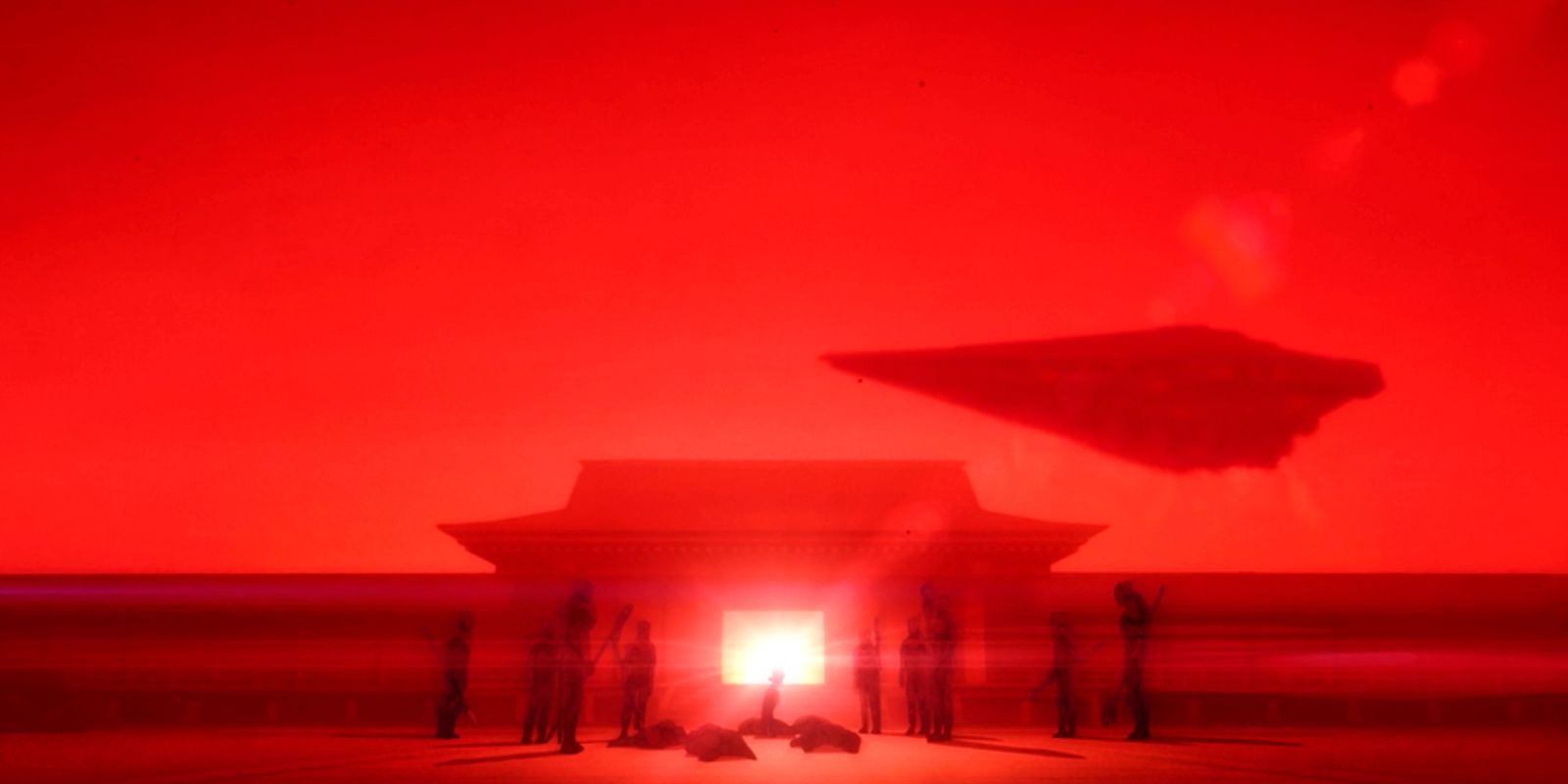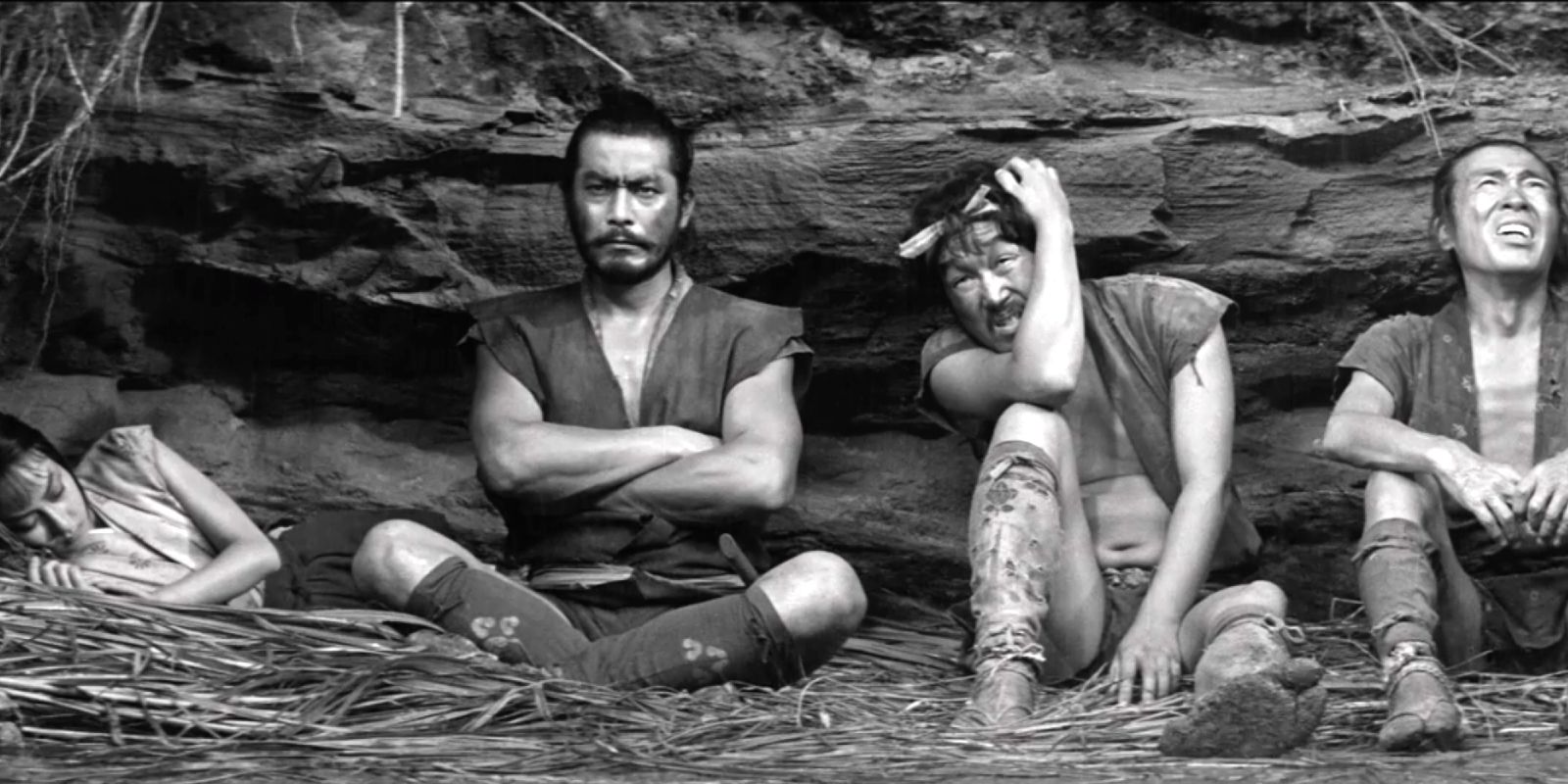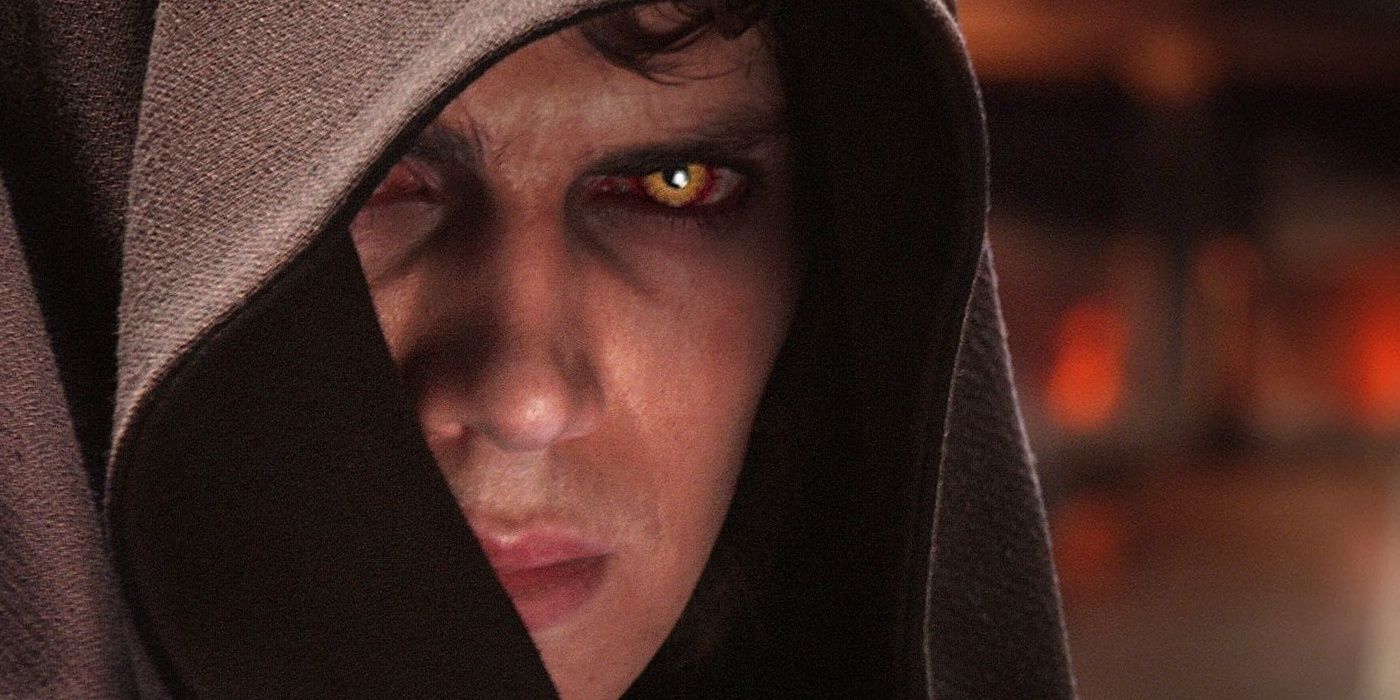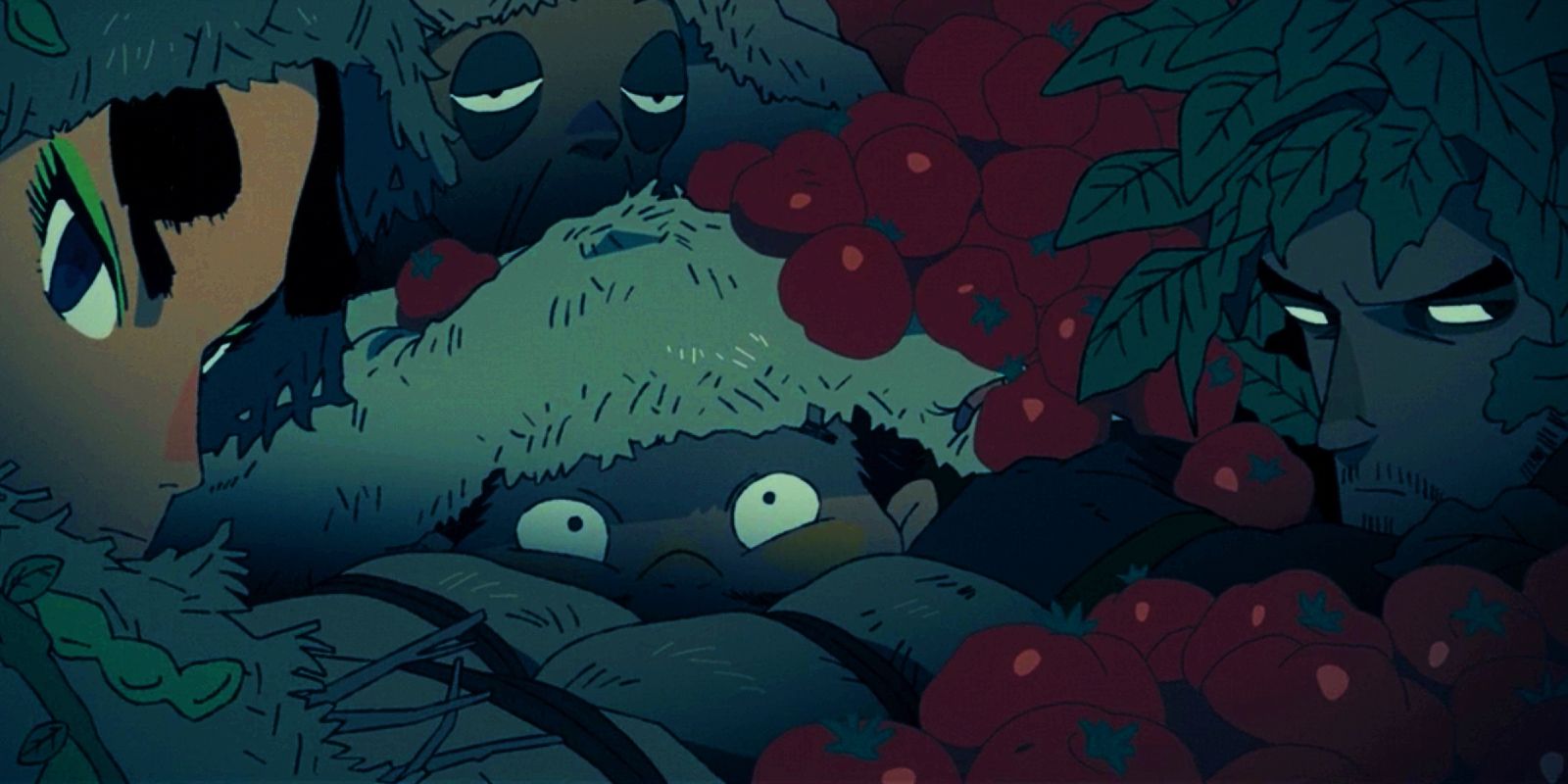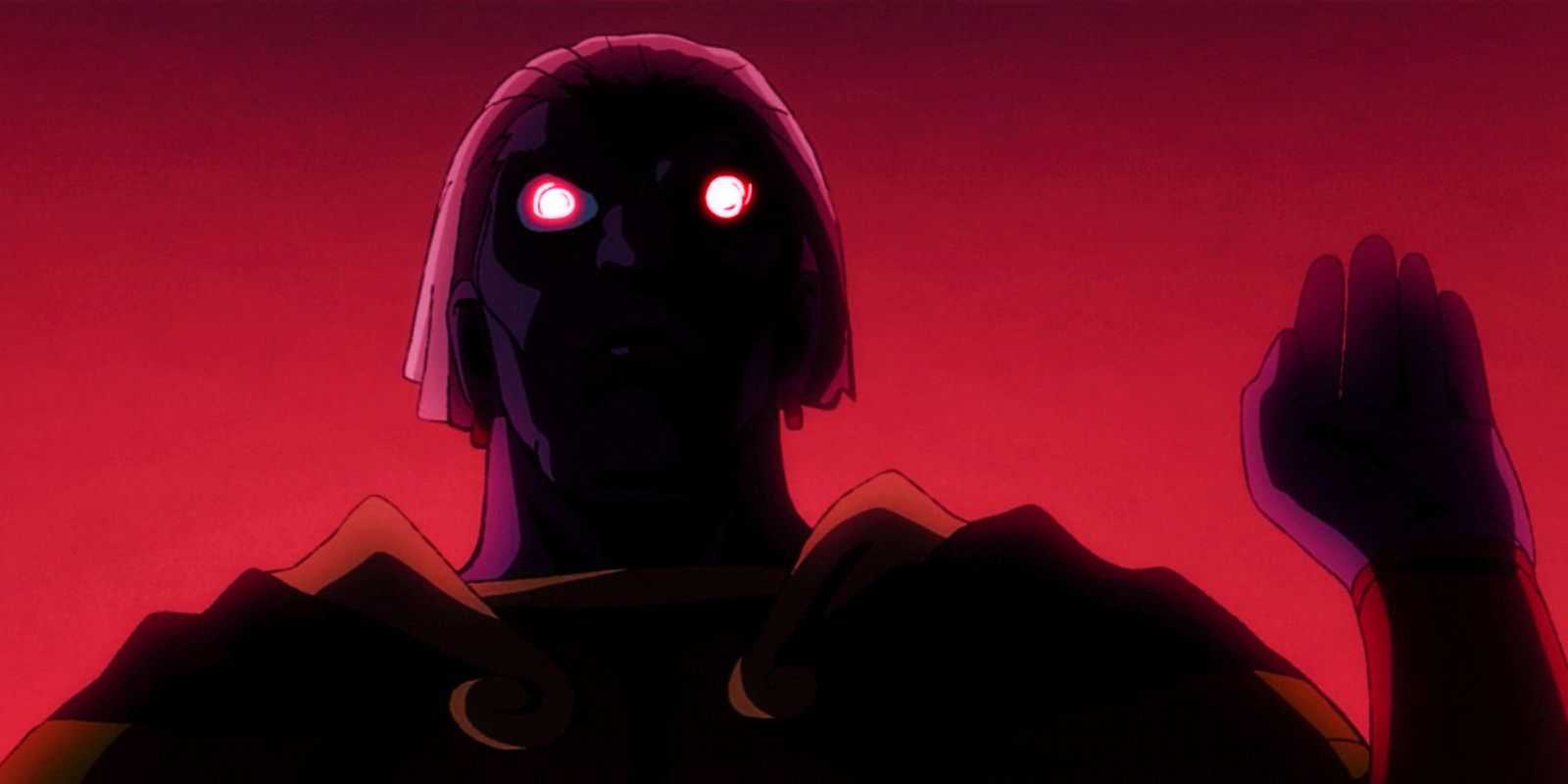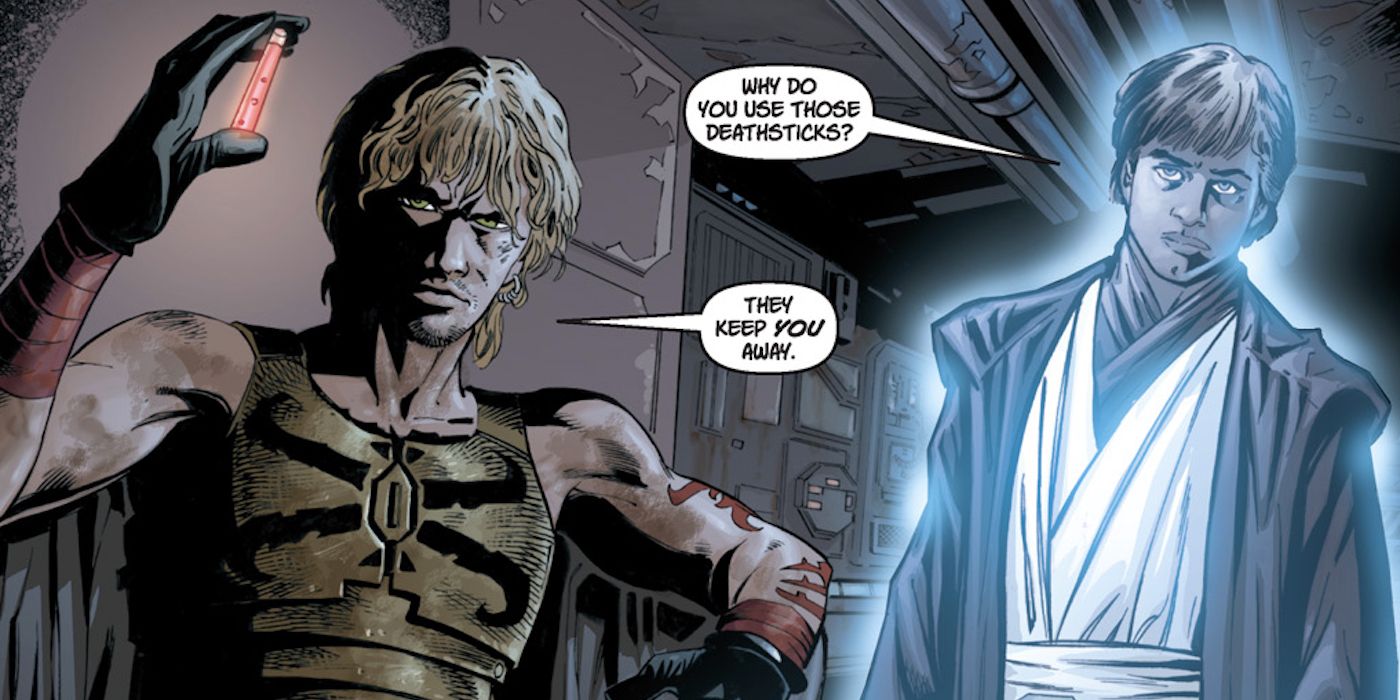WARNING: The following contains spoilers for Star Wars: Visions Episode 9, “Akakiri” streaming now on Disney+.
Star Wars: Visions attempts to wed the sprawling cosmos of George Lucas' imagination with the cultural touchstones of his muse. Of the nine episodes included in the first season, the finale, "Akakiri," captures the soul of this ambitious goal more than any other. Produced by Science Saru, directed by Eunyoung Choi, who founded the studio, and written by Yuichiro Kido, this short film trades in parallels, allegory and homage across a dynamic narrative spectrum.
"Akakiri," which means "red fog" in Japanese, examines the central inciting arc of the Skywalker saga, steeped in a feudal Japanese backdrop implicative of Star Wars' nascent origins, while delving into fabled dark side powers, and the cost that comes with them.
The Hidden Fortress
The context of Choi's work requires a discussion of circles. George Lucas has never been coy about the influence that Akira Kurosawa's 1958 masterpiece The Hidden Fortress had in shaping his conceptual blueprint for Star Wars. Kurosawa's story follows a samurai who aids a rebel princess in a civil war with the help of two disagreeable peasants, one tall and slim and one short and stout. The bickering pair are motivated by greed as opposed to their loyal droid alternate universe doppelgängers, which may have served as the storytelling impetus for Han and Chewbacca. Lucas even considered the samurai from the film, the heroically iconic Toshiro Mifune, for the role of Obi Wan Kenobi.
Enter "Akakiri", where Tsubaki the Jedi comes to the aid of the Lady Misa, a princess, in the company of her two guides. Senshuu, the tall and slim navigator of the back roads and Kamahachi, the short and stout broker of bribes and contacts. The spirit of Kurosawa's tale is told in every gorgeous shot and harnessed with masterful economy. During a panel at Anime Expo Lite Justin Leach, co-executive producer of the series, expounded on Choi's inspiration.
“I think it’s really interesting to see how the East and West influence each other, and there’s a cycle of creativity that goes back and forth,” Leach said. “It’s interesting to see her take on the classic [Akira] Kurosawa melded with the Star Wars mythology, then taking her own Science SARU expression and putting it all in this mix. It looks really great.”
In this way, the first season ends within the spiritual cradle of where Star Wars began.
The Story of Anakin
Tsubaki has been plagued by debilitating visions of someone dying a violent death. When he learns that Lady Misa's father, the king, has been killed by a Sith Lord, he tells his master that he must go and help her. His master, concerned about what these nightmares may represent, warns him against going due to temptations that may present themselves and potentially impair his judgment. The heedless Jedi crash lands on Misa's homeworld, and it is shortly revealed that Tsubaki came to the aid of her family five years prior, against another threat.
Anakin -- in turn -- was tormented with visions of losing Padme and ignored every warning his master gave him concerning where his focus and priorities should lie. His shared history with the senator sharpened his emotions, rendering his judgment unreliable in matters where she was concerned.
On Star Wars: Visions, Lady Misa is a princess in exile who is trying to smuggle herself back to her ancestral palace to defeat the Sith usurper Masago, her aunt. Faced with bad and worse choices, the fellowship of four decide to traverse a mountain path known as the Place of the Gods, a cursed land from which no one returns. Kamahachi disappears from his mount during the exhaustive trek and his earnest friend, Senshuu, is convinced of his doom. He considers it the fulfillment of destiny for ignoring the mountain's perils. Tsubaki, determined to prove that nothing is fated, goes in search of the missing guide. When they reunite some time later, the party once again intact, the Jedi has proven that Senshuu's petty prophecy was nothing more than a mindset, not an ordained conclusion.
While queen of Naboo, Padme had to breach the planetary blockade of her world to dispose of the Trade Federation's temporary interdiction of her government. Anakin's prowess in battle continually reinforced the belief in his own abilities to the detriment of his reason. With each victory he becomes more and more certain that he can defy fate itself.
Here, when Tsubaki finally comes face to face with Masago, she tells him that his fate awaits him at her side. Instead of running from them, the Sith Lord leans into her premonitions and sets about bringing them to fruition. The Jedi remains defiant, but is unwilling to risk the lives of Misa and her aides, and allows them to be captured. Masago sends a handful of her helmeted warriors towards the tortured Jedi and he dispatches each of them dispassionately. However the last soldier, staggering uncertainly forward and perhaps being prodded by Masago's subtle Force manipulations, is Misa. In that instant, Tsubaki's nightmare becomes painful reality. Misa lies dead in his arms and all that he has run from has brought him to the one place he could not flee.
The Chosen One, through his arrogance and unwillingness to conform to the emotional distance prescribed by the Jedi Order, found himself sharing in the exact same moment. Tsubaki, however, is given a gift that Anakin was denied. Masago repeats her offer to the broken Jedi, a place at her right hand with the galaxy as their domain, in exchange for Misa's life. Tsubaki doesn't understand how that could be possible, but with casual certainty Masago lays hands on the Jedi, who in turn lays hand on Misa's corpse. A wave of energy passes from one to the other, and a breath later, her eyes open. Reeling from her rebirth, Misa asks Tsubaki what he has done, and he simply answers "What I had to."
Tsubaki immediately takes his place at his new master's side, at peace with his decision -- a peace Anakin never achieved. Darth Sidious promised a power that he did not truly comprehend to a conflicted Jedi who had no concept of a life without his wife. The result was Darth Vader, a machine with bits of flesh that hated nothing more in all the universe than himself.
Dark Side Healing
Palpatine had never come to understand the dark side as completely as he had hoped. His master, Darth Plagueis, had experimented with creating life from the Force itself, as did Palpatine, which may have resulted in Anakin's birth, but he never found the answer to the mystery of death. "Akakiri" takes place at an unknown time on an unknown world, so it is uncertain what traditions Masago is drawing upon when she so effortlessly brings Misa back to life, but there are similar powers that have been introduced both in and out of canon.
Palpatine succeeded in extending his life by creating clones on Exegol, a planet that has been theorized to be a vergence or nexus in the Force where the veil between life and death is particularly thin. It was here that Ben Solo in The Rise of Skywalker brought Rey back to life. Ben and Rey were a dyad in the Force, so while they were each individuals, within the tapestry of the Force they were considered one being. This may have been why Ben was able to use his healing abilities to this degree, but even then he had to balance that power with his own life in order to be successful.
The closest ability to Masago's lies in the expanded universe detailed in Marvel comics. Cade Skywalker, a descendant of Anakin's in the Legacy era, mastered an ability to revive the dead called Dark Transfer, which he used to resurrect his master Wolf Sazen, as well as Marasiah Fel. It was a power he could use swiftly, though it required a degree of concentration. Ironically an heir of Anakin's, more than a century removed, attained the power that ultimately led to his forefather's destruction, completing a vast and epic circle.
Star Wars: Visions is available to stream on Disney+.

